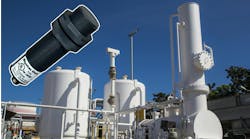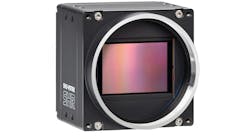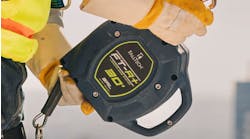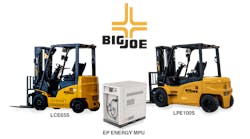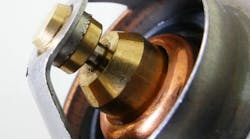What to Know When Choosing a Yellow Metal Corrosion Inhibitor
Corrosion comes in many different forms with many different solutions, which is why it's important to be aware of the multiple metal types in need of protection.
Not taking this into account may do more harm than good by trying to inhibit corrosion with the wrong chemistry. Cortec suggests looking at 3 key factors to understand some of the corrosion risks and abundant solutions when yellow metals are in the picture.
1. Know What's Inside Your Application
Whenever a manufacturer, project owner or other individual seeks a corrosion solution, it's imperative to ask what types of metals are in the system. This is because yellow metals need different corrosion inhibitors than ferrous metals (e.g. steel) and because some ferrous rust inhibitors are actually aggressive to yellow metals.
A small mistake of not realizing that a copper sensor or other yellow metal is present inside a tank treated with corrosion inhibitors aggressive to yellow metals can cause serious problems for the end user and the consultant who prescribed the product, leaving everyone worse off than if they had done nothing.
Some common examples of equipment containing yellow metals are electrical cabinets and heat exchangers. Countless others exist throughout the industrial world. It's part of the user’s due diligence to verify whether any yellow metals are present before applying treatment.
2. Know What's Surrounding Your Application
It's also important to know what's on the outside of the application. In other words, how corrosive is the surrounding environment? Yellow metals like brass and copper are typically more resistant to corrosion than ferrous metals and are often used for this reason. However, extra protection may be needed for harsh environments such as those experienced by new copper wires and tubing being shipped overseas, electrical panels and control boxes installed at paper mills or wastewater treatment plants, and copper heat exchanger tubing in refineries with high sulfuric gases. In short, more corrosives raise the risk of corrosion and warrant additional protection.
3. Know What the Product is Like
The next step is to match the corrosion-inhibiting product to the application. First and foremost, verify the product is not aggressive to yellow metals. A close second priority is to find a product that actively protects yellow metals. Fortunately, a wealth of options exists, such as Cortec's VpCI materials which include multi-metal protection unless otherwise noted. Third, it's important to match the product characteristics to the type of application.
Though yellow metals are known for their greater resistance to corrosion, a place still exists for their protection. Knowing the metals involved, the degree of corrosion hazards, and the specific benefits various corrosion solutions have to offer are the first steps to successful corrosion protection of yellow metals.
